I’m a big fan of obscure and infrequent public transport services. There’s a number of railway stations served by just one train a week, for example, and plenty of others stuck in the middle of nowhere and used by only a handful of people a year. I’ve visited plenty of these places – Altnabreac, Reddish South, Corrour, Berney Arms, British Steel Redcar and Teesside Airport. I get a kick out of making challenging journeys to empty places, although the long and cold wait to come home again is often quite unappealing.
I recently discovered what has to be one of the most infrequent bus services in Scotland, the Midland Bluebird service from Stirling to Tyndrum. There are two return journeys a day, which sounds reasonable for a rural area…although it only runs on the first and third Saturdays of each month, adding up to a whopping 48 trips a year!
The bus runs as service 160 from Stirling Bus Station, setting off at 8.20am, and running via Callander, Strathyre, Lochearnhead and Crianlarich. It then returns to Stirling as the S60, with an additional detour to Killin en route. Then, in the afternoon, another S60 runs back to Tyndrum, forming a 160 back to Stirling just after 6pm. The service runs mainly to provide some very remote villages with access to businesses in Stirling, and as such Stirling Council pays for the S60 journeys to operate. The 160 journeys effectively get the bus in position in the morning, and return it to its home base in the evening.
I’d wanted to use it ever since I first heard about it, but much of my work is at weekends, so it took me a long time to find a free day when it actually ran. However, on 15th October, the stars and planets aligned, and I finally got the opportunity to use this most rare of buses.
It made for a long day. I set off from my home in Winchburgh, driving to Linlithgow where I caught a train to Stirling. I met my son Edmund there, where he’s a student, and he joined me for this epic adventure into the wilds. We headed over to Stirling Bus Station, and took a while finding the correct stance to board the bus, having to search through all the timetable posters. We found it in plenty of time, though, and I did immediately spot some people in hiking gear who looked like they’d be joining us. I was a little disappointed, as I was rather hoping we’d get the bus to ourselves!

It soon showed up, and about six of us boarded. I was quite impressed to discover that the return fare was five pounds, which seemed pretty reasonable for what is quite a long-distance journey, taking an hour and a half in each direction.
It really did feel quite exciting to be setting off into the wilderness on a bus that runs so infrequently! I quite envied the driver, actually – if your day job usually involves humdrum urban driving in busy traffic, it must be quite nice to get set free to do a run like this now and again. Once out of the Stirling suburbs, the journey began to look quite familiar – it was one I used to drive quite regularly, to get to my mother-in-law’s house near Oban, but she’s now moved elsewhere, so it’s been three years since I last did it.
The bus could almost be considered a “rail replacement” service as well. Up until 1965, if you wanted to go from Glasgow to Oban by train, you’d end up passing through Stirling and Dunblane, before branching off to the west on a line that followed pretty much the same route as the road this bus takes. Eventually you’d end up in Crianlarich, and then on to Oban via the line that still exists. The Dunblane to Crianlarich section was considered an unnecessary duplication by Beeching in his 1963 report on rail closures, and so it met its end, slightly earlier than planned due to a massive landslide in a very remote location. After that, the Glasgow to Oban trains were diverted over the West Highland Line to Crianlarich. Remains of the old line, in particular a pretty spectacular viaduct, can still be seen from the bus.
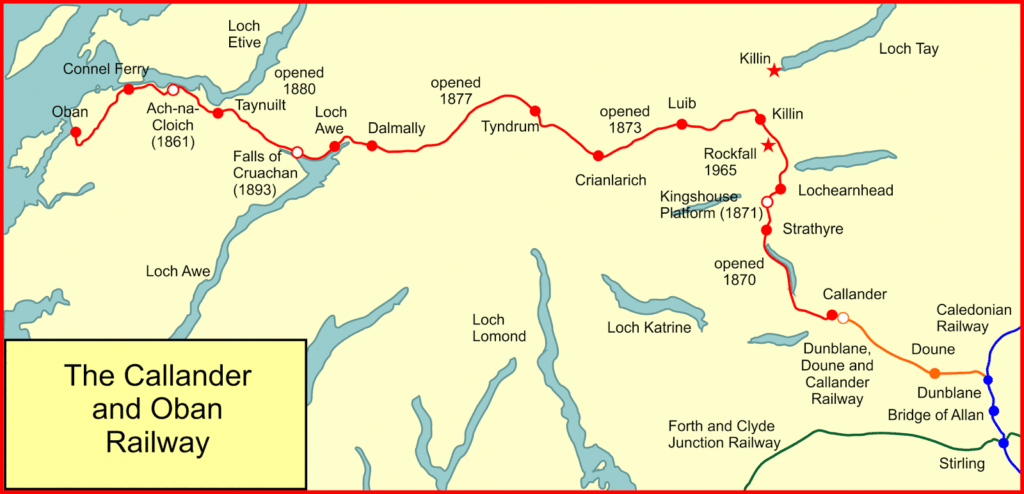
Eventually we ended up in Tyndrum, in somewhat wet and wild conditions. I felt compelled to remind my son that the town has a claim to fame – it’s the smallest settlement in the United Kingdom to have two railway stations! These are Tyndrum Lower for trains to Oban, and Upper Tyndrum for trains to Fort William. It’s become bit of a family in-joke that this factoid always gets mentioned in the same breath as Tyndrum, without fail.
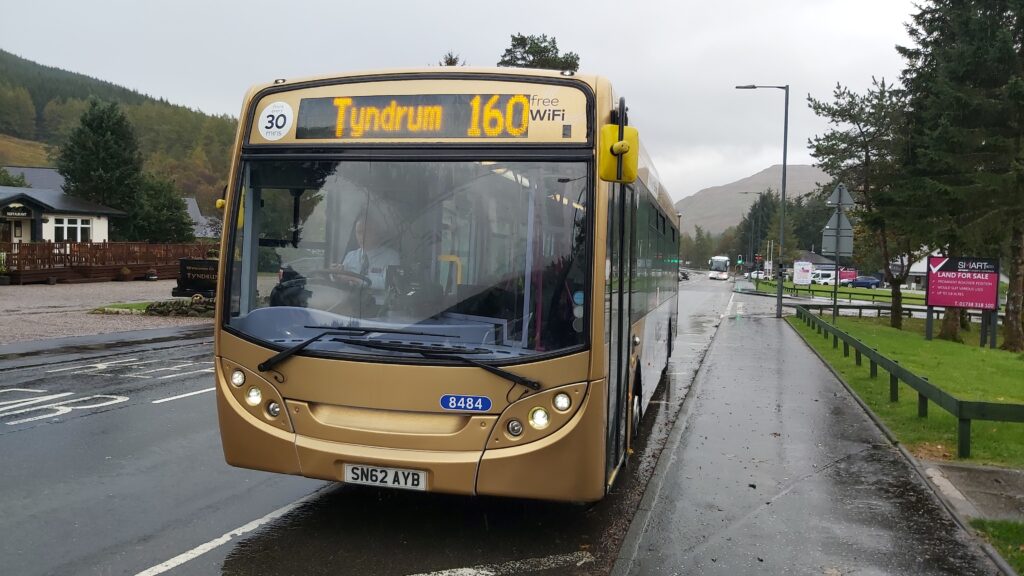

The bus deposited us near a well-known Tyndrum institution, the Green Welly Stop. This is actually a collection of shops and cafes, along with a filling station, on the edge of the village, forming the last stop for supplies before entering some very remote country. I can strongly recommend the pizzas – stopping for those became a tradition in the days when we regularly drove this way.
Given that we were effectively deposited in a remote village with six hours to kill in pretty dreadful weather, we decided to avail ourselves of the train to Oban. I’m fond of this attractive town, which is a major hub of commerce and transport for quite a wide area. It has a reasonably decent train service these days, including several services with new bike-carrying carriages, a great innovation given the popularity of cycling in the Highlands. The train we boarded at Tyndrum Lower was very busy, even on a wet and cold day, showing the popularity of this part of the world. The West Highland Line is considered one of the most scenic railway journeys in the world, and although the Fort William branch is considerably more spectacular in my opinion, there’s plenty to keep a traveller to Oban staring out of the window as mountains, lochs and forests hove into view. Another thing to look out for is the special signals designed to alert drivers to rock falls on the line – they’re operated when boulders hit a long line of wires alongside the track. The wires are known as “Anderson’s Piano”, named after the inventor of the signals, and the musical sounds generated by the wires when high winds blow over them.
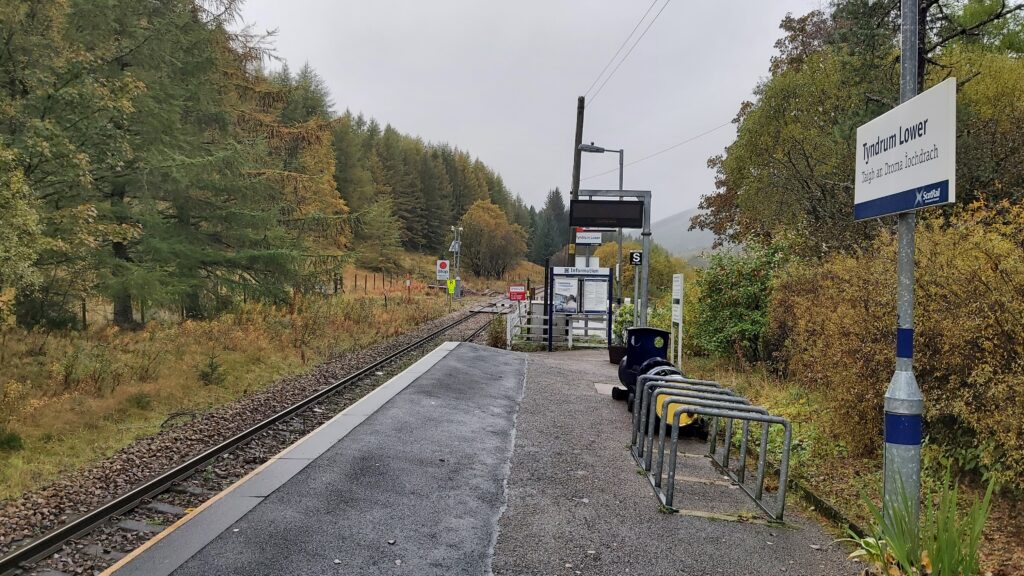
First order of business in Oban was lunch, and after that we took a walk up to McCaig’s Tower, an incomplete but somewhat spectacular structure on a hillside overlooking the town. It’s hard to describe, but it’s a circular stone structure with a garden inside it. There was originally a plan to build a tower, but it never happened. I suppose you’d call the whole thing a folly these days, and I’m very fond of the rather pointless structures high-minded Victorians enjoyed building, so it’s well worth seeing. It offers very impressive views out over the town, harbour and sea, so the brisk climb is well worth the effort.
I dug out my approximately 100-year-old Brownie Number 2 camera while in Oban, and it recorded some nice images. Behold!
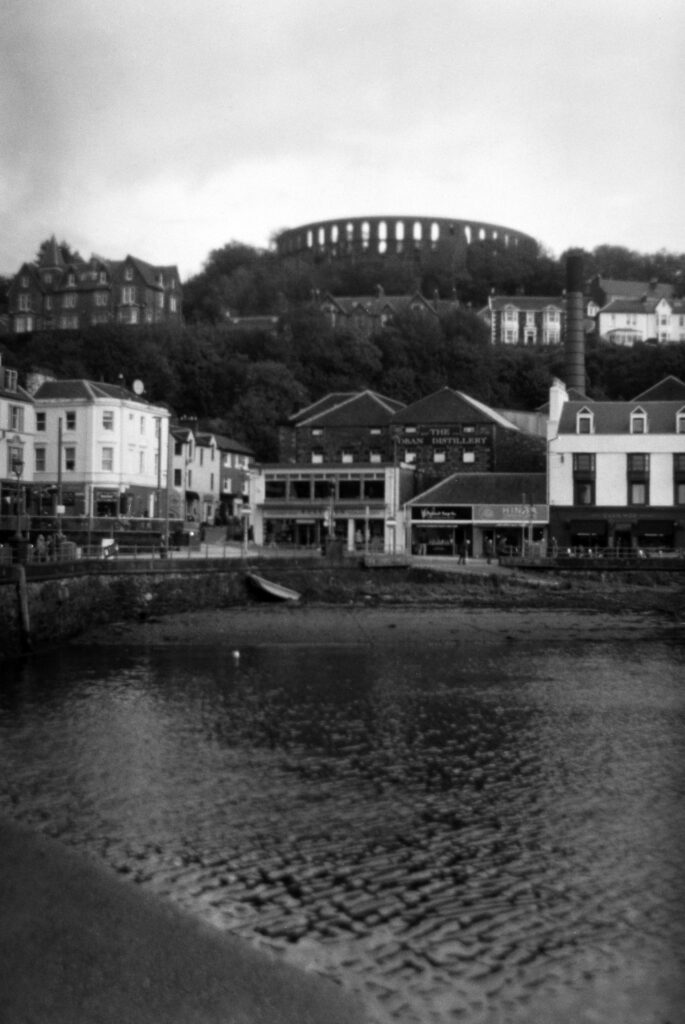
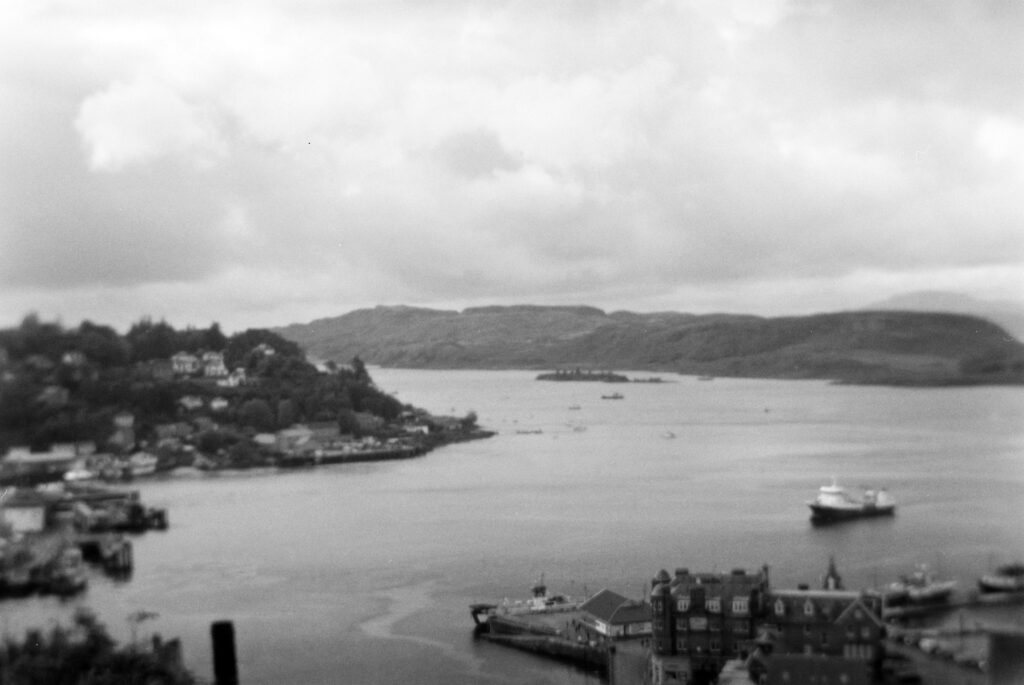


We had some time to kill after this before taking the train back to Tyndrum, so browsed around a few shops and had a nose around the ferry terminal. Once again, the return train journey was quite crowded. On arrival back in Tyndrum, we had some time to go and look at Upper Tyndrum station before boarding the bus back to Stirling.
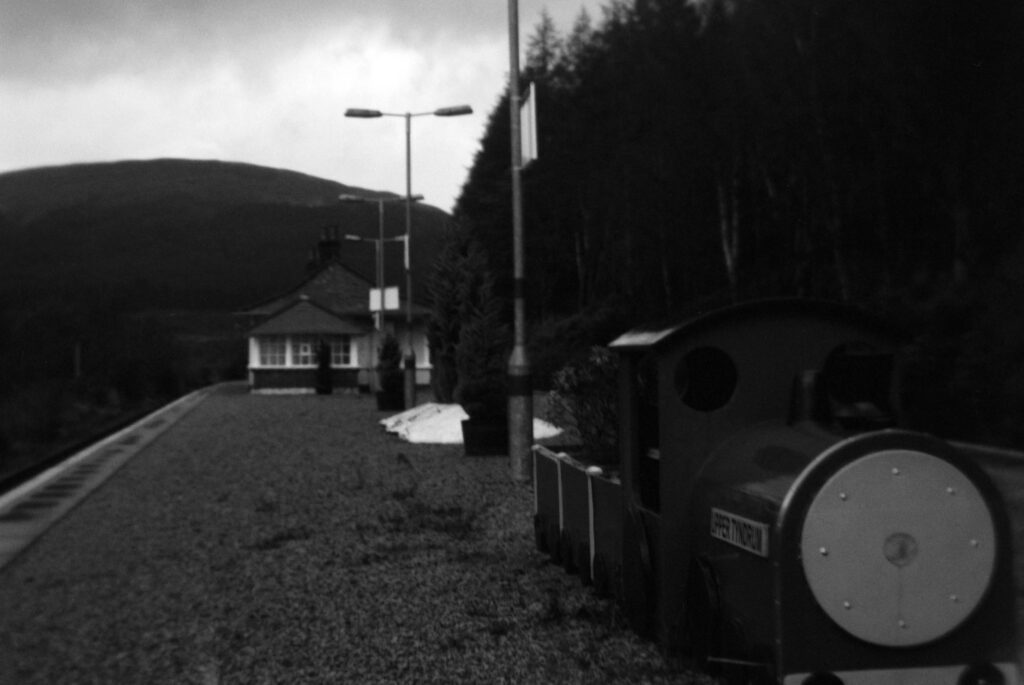
I have to be honest and say the return bus journey wasn’t much fun – as darkness fell, my inability to see out of the window contributed to some nasty travel sickness as the bus bumped and lurched over twisty and hilly roads. This journey will be much nicer in summer! It was quite a relief to get back to Stirling, stand still and gulp in some fresh air.
It was very late by the time I got home, and the whole day was somewhat exhausting, but I feel like I’ve joined some sort of exclusive club taking such an obscure bus journey, and it was brilliant fun (despite the nausea). Do give it a go yourself!